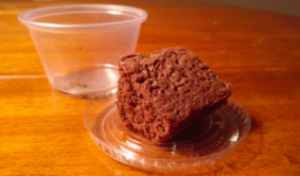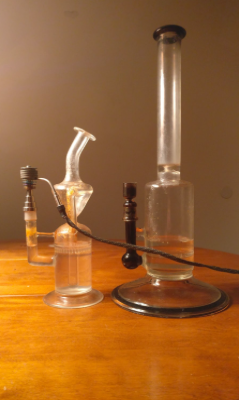Christina Yannello, a sophomore public relations and advertising major from New York, is a typical, productive college student. She does her homework, attends her classes on time, works out at the gym, and is involved on campus. The thing that’s not so typical, however, is that she claims marijuana gives her the motivation to do these things.
Yannello has been using marijuana since high school, and feels that her mental state has only improved since she started using it. Though she has a medical recommendation for insomnia, she enjoys smoking with friends and treats trips to the dispensary like social events.
“I talk about this with my friends a lot, we always say since we’ve been smoking, we’ve been having overall better mental health, just because we are motivated to do different things,” she said. “For me, I think it’s due to the quality of sleep I have. I’m able to do more things during my day.”
The legalization of marijuana on January 1st has changed how some Chapman students get their weed, and has made it easier for students like Yanello to get get marijuana. Once students turn 21, they won’t need to spend money on a medical recommendation, which can cost as much as $40.
However, Yannello said that as a medical user, she is a bit concerned about price increases with the new legalization, as there are new taxes put in place for recreational use.
Despite legalization, the Chapman marijuana policy will remain the same, as any change could put Chapman’s federal funding at risk, according to Dean of Students Jerry Price. Student smokers will be at risk if they bring their weed or paraphernalia to campus, even if it is for filming purposes, according to the university’s Student Conduct Code.
Smoking is fairly common with students nationwide. 39 percent of full-time college students aged 19-22 have smoked at least once in the past 12 months, and 22 percent have smoked in the last 30 days, according to a 2016 study by the University of Michigan. In addition, 4.9 percent of students are smoking daily or near daily. Now that weed is legal in California, it stands to reason that these numbers should be climbing.
Erica, who’s name had been changed for this article because she is currently in an alcohol sobriety program, said that the legalization has made it easier to get weed, because it takes the risk out of getting it from a street dealer. Originally from Boston, she was unable to get medicinal marijuana. Now based in California, she says it’s an effective treatment for her anxiety and insomnia.
When she lived in Boston, she would text her dealer asking for an amount and “he would be like ‘Yeah, be there in five minutes,’ which meant ‘Be there in an hour,’” Erica said.
Most of the recreational dispensaries near Chapman are in Santa Ana, according to WeedMaps. Most of the dispensaries were originally opened for medicinal purposes and have since joined the recreational circuit.

Upon entering a dispensary, customers are typically asked to sign in and show their identification before being letinto the main room. Here, “budtenders” serve choices of flower, hash oil or concentrate and edibles, which have come a long way from the stereotypical brownie. Cereals, candies and cookies are just a few options.
While both Yannello and Erica preferred to smoke through a glass bong, consuming marijuana concentrates or edibles is growing in popularity. Concentrates, also known as “dabs,” are highly concentrated THC that has been extracted from the flowers, while edibles are brownies or other foods that have been infused with THC.
“The thing about edibles is, for the most part, you hear two things: ‘I tried an edible and I didn’t feel anything’, and ‘I tried an edible and I felt like I was going to die,’” Erica said. Erica described dabs as very intense, and prefers to use “dab pens,” which are small, portable electronic vaporizers.
Despite the change in the law, Price and Chief of Public Safety Randy Burba have indicated that there will be no change in Chapman’s official policy regarding marijuana.
Price wrote in an email to students that since marijuana is prohibited under the Drug Free Schools and Communities act, there will be no change in student conduct policy despite the statewide legalization.
Price said that the university views marijuana as more of a medical issue than a legal one. He said Chapman treats marijuana infractions similarly to a severe alcohol violation, and will seek help for the student accordingly.
“If a student has an alcohol problem, it doesn’t matter if they are 19 or 22, we want to get them help,” Price said.
Marijuana use is treated as a violation of Chapman’s policy, not the law, Burba said.
“If you had a medical endorsement, you weren’t violating the law, you were just violating a campus rule,” Burba said. “(With the new law) if you’re over 21 and you’re possessing it (on campus) then that’s not violating the law. That’s just a conduct violation.”
If you are under 21 and not a medical user, your pot “will still be destroyed”, Burba said.
However, since the Orange Police department is no longer involved in enforcement for those over 21, it is much more “awkward” for them to enforce the policy, Price said. They are told to bring it off campus, but there is no actual follow up to ensure that this happens.
“We can’t confiscate it ourselves, because under federal law Chapman has no more right to have the marijuana than the student does,” Price said.
Students that are off-campus do not need to be worried about the conduct code restrictions. Burba explained that so long as off-campus use is legal, students should face no problems with the conduct code. Burba described Public Safety’s role as more reactionary, stepping in to enforce the code as necessary.
“Most of the time when things are found in the dorms the housing people will handle it themselves,” said Burba. “We don’t actively walk up and down the floors looking for violations. Some people think that we do but we don’t. We’re typically only there because we were called there.”
Both Yannello and Erica have seen some increase in their friends smoking, an increase that Price anticipated because the illegality of marijuana drove some people away.
“Just like you have students who do not drink until they are 21, there were some who did not use marijuana because it was not legal,” Price said. “I expect to see an increase, but I don’t expect it to be especially significant.”

As far as parties and other social events go, senior math major Will Ochoa believes that there hasn’t been an immediate increase in the openness or presence of marijuana, partly because it was already common among young people.
“People seem pretty open about it to begin with, at parties in particular. I’ve never really seen it be hidden,” Ochoa said.
Both Yannello and Erica view marijuana has medicinal and social uses. Erica said that weed is effective at handling the symptoms of her anxiety and insomnia, though recognizes it is not a cure.
“Sometimes when I used to take sleeping pills, they kind of just knock you out and you wake up the next morning with a headache and just not feeling well,” Yannello said. “When you smoke, you just naturally start to get tired, your eyelids get heavy, and you just go to bed.”
Yannello views herself and her friends as breaking the stereotype of the “unmotivated stoner,” stating that she started going to the gym due to the motivation that smoking gave her, and believes that she represents many of Chapman’s smokers.
“I feel like there’s such a stigma with smoking, but I’m happy to say I’m not the stigma, I’m breaking the stereotype, and hopefully it will become more mainstream as (a form of) medicine,” Yannello said.
